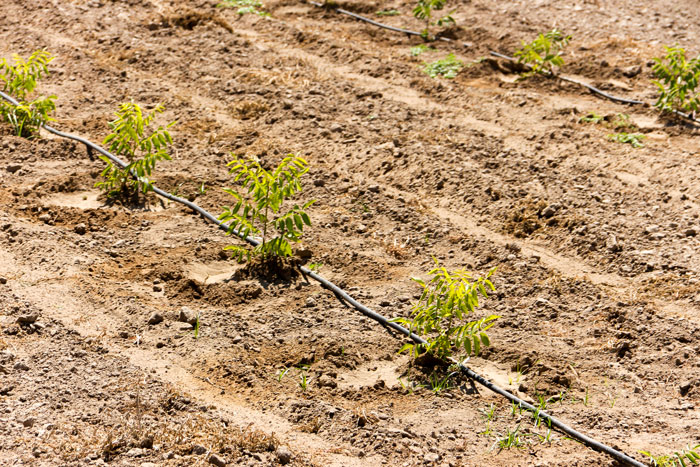
Nematode trials will test new walnut root stocks at Kearney Ag Center
Nematodes are microscopic worms less than one millimeter in length and are capable of damaging root systems in a variety of plants, including walnuts. While fumigation has been a standard practice of treating soil prior to planting, regulatory constraints seek to limit those tools

Because they are one of California’s high-value crops, finding solutions for nematodes and other maladies in walnut orchards is important.
The regulatory trend to eliminate fumigants used by growers to control a multitude of soil-borne pests and diseases continues to push university researchers for solutions not only to nematodes, but to other pests and diseases incited by bacterial, fungal and fungal-like pathogens.
Plant damaging maladies such as crown gall, Phytophthora root rot and lesion nematodes are common issues for commercial walnut growers, making work like this valuable.
Andreas Westphal is an assistant cooperative Extension specialist and nematologist with the University of California, Riverside. He is conducting trials at Kearney Agricultural Center in Parlier to test walnut root stock reactions to nematodes. His work follows that of others who developed root stocks in hopes of finding resistance to nematodes and other maladies.
New walnut orchards are being planted at Kearney to incorporate these studies. Part of this effort will allow Westphal to test the newly-developed rootstock crosses for resistance or tolerance to the soil-borne pests.
For his purposes, resistance aims to test whether nematodes can reproduce, while tolerance will sample for the presence of nematodes and determine what the effect of them is on the trees.
Nematodes are microscopic worms less than one millimeter in length and are capable of damaging root systems in a variety of plants, including walnuts. While fumigation has been a standard practice of treating soil prior to planting, regulatory constraints seek to limit those tools.
The work Westphal is a part of includes breeding walnuts for genetic diversity by traditional cross-breeding techniques, followed by disease evaluations. While some of the work is happening at UC Davis, evaluations will take place at the Kearney station south of Fresno.
The goal is rootstock that is better able to resist the root galling and yield-robbing effects of nematodes.
Trees are currently being planted at Kearney with more ground work and plantings to continue this year. The Kearney location is ideal, in part, because of the sandy soil, which allows root-knot nematodes to thrive.
Determining the tolerance of walnut rootstock includes transplanting them into highly pathogen-infested soils. A tree spade is used in this process. Plants are carefully watered into their new location, and most have grown substantially since being planted earlier this year.
Measurement data will be taken this fall to select the most promising rootstock candidates for further evaluation. Those selected will then be planted into settings resembling commercial production conditions where fumigation and non-fumigation are compared, he said.
The evaluations are part of a lengthy and tedious process of breeding and selecting rootstock, then planting the trees into fields already infested by root-knot nematodes and root lesion nematodes.
Westphal cautions that not all nematodes are dangerous to plants. Some have beneficial effects that include cannibalizing other nematodes, enhancing nutrient cycling in the soil by breaking down organic matter and feeding on insect larvae. This is why non-chemical approaches to combatting the more deadly nematodes are important.
The studies are being funded in part by the California Walnut Board and through federal programs.
About the Author(s)
You May Also Like





